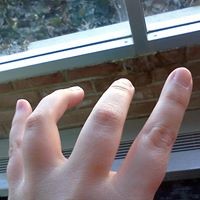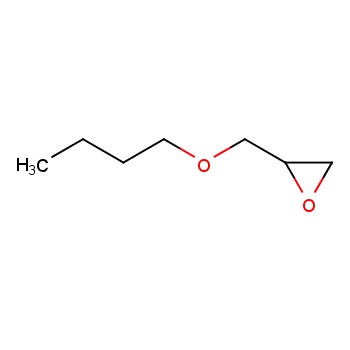Butyl glycidyl ether is a colorless liquid with a slightly irritating odor. It is used as a viscosity reducer and chemical intermediate for epoxy resins, as well as a solvent stabilizer for chlorides. This substance is a central nervous system depressant and has mild respiratory irritation. Animal experiments have shown significant growth inhibition with repeated exposure. According to GBZ2.1-2007 "Occupational Exposure Limit for Chemical Hazards in the Workplace," the PC-STEL of Butyl glycidyl ether is 60mg/m3 and the PC-TWA is 120mg/m3.

Preparation
Method 1: Butyl glycidyl ether is synthesized by using n-butanol and epichlorohydrin as raw materials, boron trifluoride ether complex as a catalyst, and sodium hydroxide as a closing agent for the ring-closing reaction. The optimal synthesis conditions are as follows: the mass fraction of boron trifluoride ether complex is 0.40%, the ratio of epichlorohydrin to n-butanol is 1.8:1, and the ratio of sodium hydroxide to n-butanol is 1.4:1. The ring-closing reaction temperature is 30°C.

Method 2: 74kg of n-butanol and 8kg of toluene are added to a reaction vessel, and under stirring, 3kg of a high-molecular-weight carrier with a composite catalyst is added and stirred for 15 minutes. Then, 100kg of epichlorohydrin is added dropwise at 50-70°C for 2 hours, followed by maintaining the temperature at 40-45°C for 3 hours. The catalyst is filtered out, and benzyltriethylammonium chloride, tetrabutylammonium hydrogen sulfate, and polyquaternium-6 ternary composite catalyst are added as catalysts (the amount of benzyltriethylammonium chloride is 0.5-1% of the mass of the reactants, the amount of tetrabutylammonium hydrogen sulfate is 1-3% of the mass of the reactants, and the amount of polyquaternium-6 is 0.5-0.9% of the mass of the reactants). Then, 90kg of liquid alkali (48%) is added dropwise at 50-55°C for 2 hours, and the temperature is maintained at 50-55°C for 3 hours. After the reaction is complete, the by-product NaCl is filtered out, and the lower brine is separated to obtain 130kg of Butyl glycidyl ether with an epoxy value of 0.595eq/100g.
Research and Applications
Cao Cong et al. studied the influence of Butyl glycidyl ether (501) on the properties of epoxy resins through viscosity, mechanical property testing, differential scanning calorimetry, and thermogravimetric analysis. They also investigated the curing reaction kinetics of the 501/epoxy resin system. The results showed that with an increase in the amount of 501, the viscosity of the system significantly decreased, the tensile strength and heat resistance decreased slightly, and the flexural strength initially increased and then decreased, but still improved overall. The constant temperature curing temperature of the system gradually decreased with an increase in the amount of 501, and the activation energy showed a decreasing trend. The reaction order fluctuated around 0.93, indicating that the addition of 501 did not have a significant impact on the curing reaction mechanism of the epoxy resin system.
Main References
[1] Huang Biwu, Jiang Ankun, Weng Zixiang, Yang Zhihong. Synthesis of Butyl glycidyl ether and its research as a cationic UV curing diluent[J]. Fine Petrochemicals, 2010, 27(04): 23-26.
[2] [Chinese invention, Chinese invention authorization] CN201510576509.5 A method for the preparation of highly selective epoxy glycerol ether.
[3] Cao Cong, Chen Haozhe, Liu Xiaohang, Song Shanhao, Zhou Zhengfa, Xu Weibing. Properties and curing kinetics of Butyl glycidyl ether modified epoxy resin[J]. Thermosetting Resins, 2017, 32(05): 19-22.





